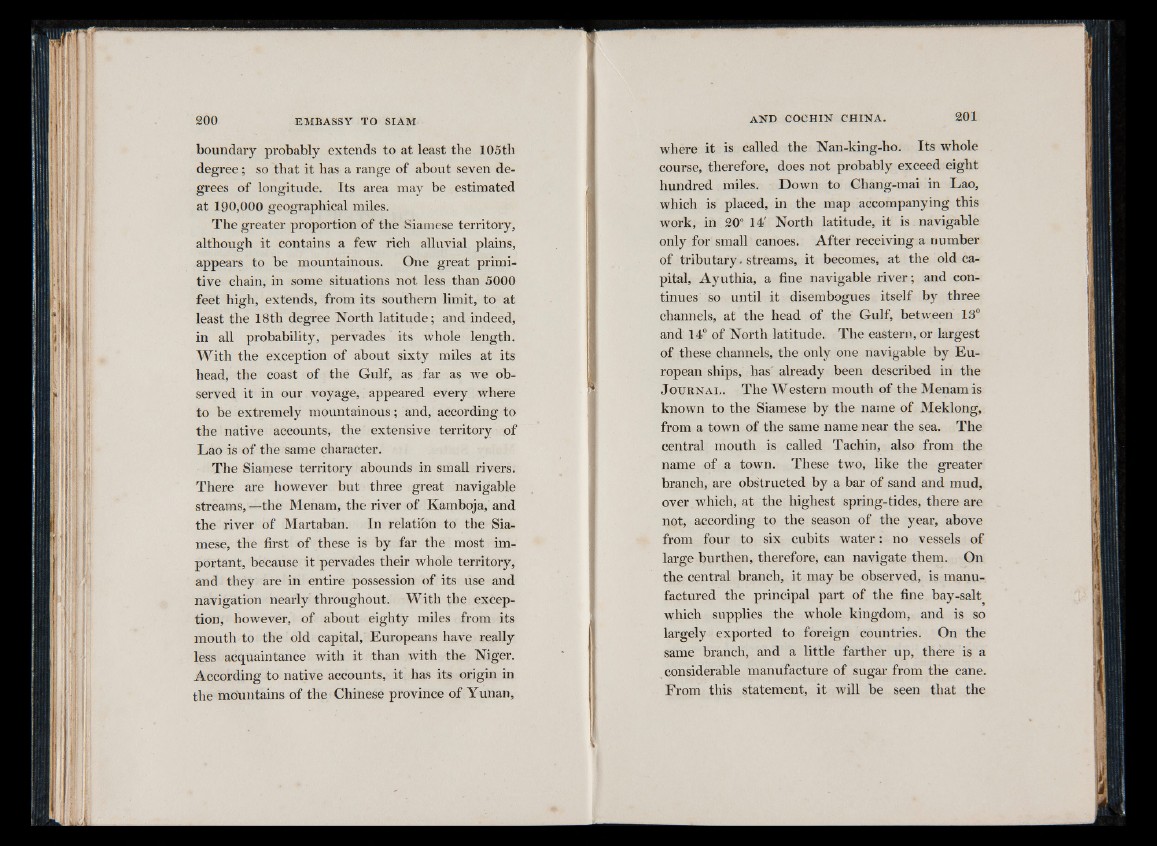
boundary probably extends to at least the 105th
degree; so that it has a range of about seven degrees
of longitude. Its area may be estimated
at 190,000 geographical miles.
The greater proportion of the Siamese territory,
although it contains a few rich alluvial plains,
appears to be mountainous. One great primitive
chain, in some situations not less than 5000
feet high, extends, from its southern limit, to at
least the 18th degree North latitude; and indeed,
in all probability, pervades its whole length.
With the exception of about sixty miles at its
head, the coast of the Gulf, as far as we observed
it in our voyage, appeared every where
to be extremely mountainous; and, according to
the native accounts, the extensive territory of
Lao is of the same character.
The Siamese territory abounds in small rivers.
There are however but three great navigable
streams, —the Menam, the river of Kamboja, and
the river of Martaban. In relation to the Siamese,
the first of these is by far the most important,
because it pervades their whole territory,
and they are in entire possession of its use and
navigation nearly throughout. W ith the exception,
however, of about eighty miles from its
mouth to the old capital, Europeans have really
less acquaintance with it than with the Niger.
According to native accounts, it has its origin in
the mduntains of the Chinese province of Yunan,
where it is called the Nan-king-ho. Its whole
course, therefore, does not probably exceed eight
hundred miles. Down to Chang-mai in Lao,
which is placed, in the map accompanying this
work, in 20° 14' North latitude, it is navigable
only for small canoes. After receiving a number
of tributary, streams, it becomes, at the old capital,
Ayuthia, a fine navigable river; and continues
so until it disembogues itself by three
channels, at the head of the Gulf, between 13°
and 14° of North latitude. The eastern, or largest
of these channels, the only one navigable by E u ropean
ships, has' already been described in the
J ournal,. The Western mouth of the Menam is
known to the Siamese by the name of Meklong,
from a town of the same name near the sea. The
central mouth is called Tachin, also from the
name of a town. These two, like the greater
branch, are obstructed by a bar of sand and mud,
over which, at the highest spring-tides, there are
not, according to the season of the year, above
from four to six cubits water: no vessels of
large burthen, therefore, can navigate them. On
the central branch, it may be observed, is manufactured
the principal part of the fine bay-salt^
which supplies the whole kingdom, and is so
largely exported to foreign countries. On the
same branch, and a little farther up, there is a
considerable manufacture of sugar from the cane.
From this statement, it will be seen that the